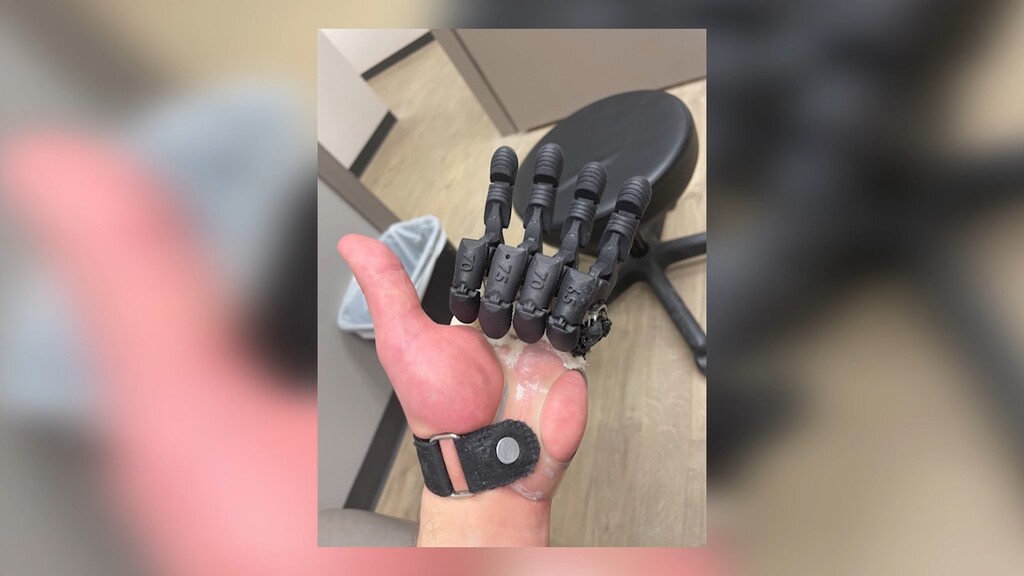Amputation is a life-altering event that leaves individuals with both physical and emotional challenges. Traditional prosthetic solutions have advanced significantly over the years, offering amputees more mobility and functionality. However, they often fall short in restoring the natural feel, sensation, and full range of motion that limbs provide. Enter the groundbreaking “Starfish Surgery,” a procedure that is revolutionizing the way amputees approach limb loss. This innovative surgery has the potential to change the lives of millions by offering hope for a future where prosthetic limbs closely mimic biological ones.
In this article, we will explore what the Starfish Surgery is, how it works, the science behind it, and why it has the potential to transform life for amputees worldwide.
What is Starfish Surgery?
The Starfish Surgery, also known as the “regenerative limb surgery,” takes its name from the remarkable ability of starfish to regenerate lost limbs. It is based on cutting-edge regenerative medicine principles, using a combination of tissue engineering, advanced prosthetics, and neural interfacing to restore not just the functionality but also the sensory experience of missing limbs. Unlike traditional amputations where a prosthetic is attached to the residual limb, Starfish Surgery allows for the connection of a prosthetic directly to the body’s nervous system, providing sensation, motor control, and even some potential for tissue regeneration.
The Science Behind Starfish Surgery
Starfish Surgery blends a range of advanced medical technologies, including nerve reconnection, tissue regeneration, and bioelectricity. Here’s a breakdown of the core scientific principles behind it:
1. Nerve Signal Integration
In traditional amputations, nerves are often left disconnected from the prosthetic limb, which leaves amputees without a sense of touch and with limited fine motor control. In contrast, Starfish Surgery directly reconnects the nerves in the residual limb to the prosthetic device using advanced neural interfaces. These interfaces are equipped with sensors that detect electrical signals sent by the brain to control the limb. This process allows the brain to “talk” to the prosthetic limb as if it were a natural extension of the body.
2. Tissue Regeneration
Inspired by the regenerative properties of starfish, scientists working on Starfish Surgery aim to stimulate tissue regrowth in amputees. While full limb regrowth is not yet possible, the surgical process uses stem cells, scaffolding materials, and growth factors to encourage the regeneration of tissues at the amputation site. This helps in healing, minimizes phantom limb pain, and enhances the integration of the prosthetic with the body.
3. Bioelectric Feedback
One of the most exciting aspects of Starfish Surgery is the use of bioelectric feedback systems. These systems mimic the body’s natural electrical currents that control muscles and sensation. When integrated into the prosthetic, bioelectric feedback provides real-time sensory information, allowing amputees to feel pressure, temperature, and even textures through their prosthetic limb. This restores a more natural, intuitive connection between the individual and the prosthesis.
How Starfish Surgery Works
The Starfish Surgery involves multiple stages, beginning with careful planning and assessment of the patient’s residual limb and nerve condition. Here’s a step-by-step guide to how it works:
1. Preoperative Assessment
The process begins with an in-depth medical evaluation, including nerve testing and imaging. Surgeons assess the viability of reconnecting nerves and the best prosthetic design for the patient. Patients also undergo psychological assessments to prepare them for the changes in sensory perception and functionality post-surgery.
2. Nerve Reconnection Surgery
During the surgery, nerves in the residual limb are rerouted to connect with the sensors embedded in the prosthetic limb. This phase involves delicate microsurgery techniques to ensure that the nerve endings are properly connected. The sensors are then calibrated to respond to signals sent from the brain, enabling the patient to control the prosthetic naturally.
3. Prosthetic Integration
Once the nerve reconnection is successful, the prosthetic limb is fitted. This advanced prosthetic is designed to communicate seamlessly with the patient’s nervous system. Engineers customize each prosthetic to match the physical and functional needs of the amputee. In addition to motion control, sensory receptors in the prosthetic give feedback to the patient about the external environment.
4. Rehabilitation and Training
Rehabilitation is a crucial part of the process. Patients work with physical therapists and occupational therapists to adapt to their new limb. This period of training can take weeks to months, depending on how quickly the patient can adjust to the new sensory and motor experiences. Over time, many patients report a significant improvement in mobility, functionality, and quality of life.
The Benefits of Starfish Surgery for Amputees
The Starfish Surgery brings several unprecedented benefits that could make it a game-changer for the future of prosthetics. Here are some of the key advantages:
1. Restored Sensation
One of the most revolutionary aspects of Starfish Surgery is the restoration of sensation. Amputees using traditional prosthetics often lack any tactile feedback from their artificial limbs. Starfish Surgery allows users to feel sensations like pressure, temperature, and texture, making the limb feel more like a natural part of the body.
2. Enhanced Motor Control
The neural integration in Starfish Surgery enables amputees to have much finer control over their prosthetic limbs. This precision can make daily activities, such as gripping objects or typing, much easier and more intuitive. Over time, many patients even regain the ability to perform complex movements like playing a musical instrument or engaging in sports.
3. Reduction in Phantom Limb Pain
Phantom limb pain, a condition where amputees feel pain in the missing limb, is a significant issue for many. The surgery can alleviate or eliminate this pain by re-establishing connections between the nervous system and the prosthetic, giving the brain a focal point for nerve signals.
4. Improved Aesthetics and Comfort
By promoting tissue regeneration and using customized prosthetic designs, Starfish Surgery can make the artificial limb look and feel more natural. The integration of tissue scaffolding allows for smoother skin and muscle connections, making the prosthetic more comfortable for daily use.
Challenges and Future Potential
While Starfish Surgery offers a bright future for amputees, it is not without its challenges. The surgery is highly specialized and currently available only in select medical centers. The cost of the surgery and prosthetic devices remains high, making it inaccessible to many. Additionally, long-term studies are still needed to determine how well the prosthetics hold up over time and how effective the nerve regeneration is.
That said, the potential for future advancements is enormous. Scientists are exploring ways to make the procedure more affordable and scalable. With continued investment in regenerative medicine and prosthetic technology, Starfish Surgery could one day become the gold standard for amputees worldwide.
Bottom Line : A New Era for Amputees
The Starfish Surgery represents a groundbreaking shift in how amputations and prosthetics are approached. By merging the power of advanced prosthetics, neural integration, and regenerative medicine, this surgery offers hope for a future where amputees can not only regain functionality but also experience the world through their prosthetic limbs. For millions of amputees, Starfish Surgery could be the key to regaining their independence, mobility, and sense of touch—a true game-changer in the realm of medical innovation.




